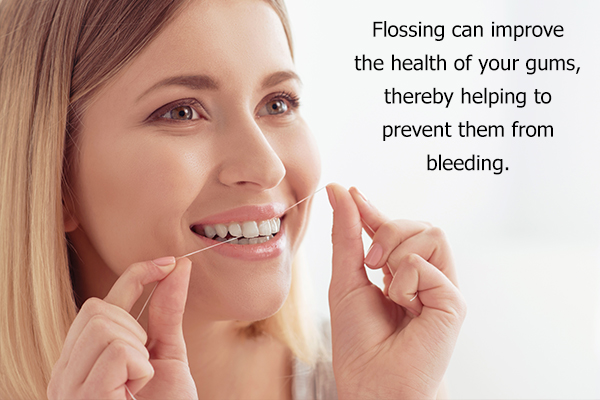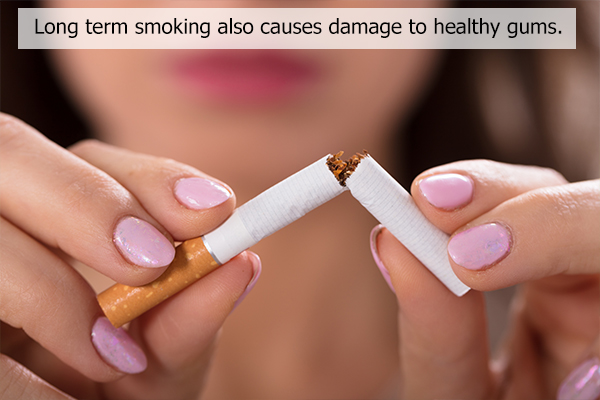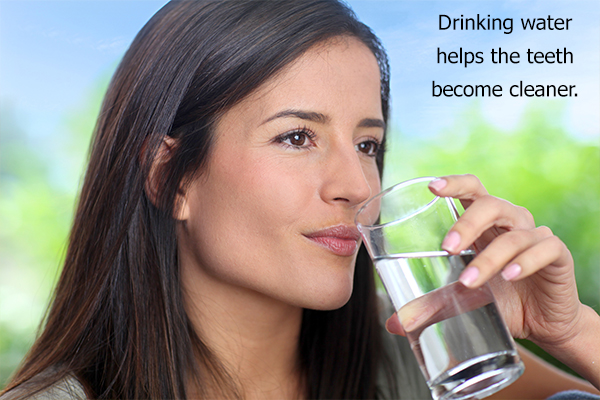In this article:
A smile is the best way to let someone know that you’re happy to see them or that you like them. Your smile has a huge effect on how others perceive you. It is usually the first thing people notice.

Smiling a lot can increase your “face value,” which means you should take care of it daily.
A healthy smile can be achieved and maintained by following a few simple steps. Here are 10 things you can do to improve the appearance and health of your smile, which will help you put your best face forward.
1. Brush Your Teeth Twice a Day
Brushing the teeth is a simple step that is overlooked by many. Most people still need to be reminded to brush their teeth at least twice a day. Plaque can harden into tartar. Thus, people who frequently brush their teeth have whiter and healthier teeth than those who brush less often.
How you brush is also important:
- Place your toothbrush at a 45-degree angle to the gums.
- Gently move the brush back and forth in short strokes.
- Brush the outer surfaces, inner surfaces, and chewing surfaces of the teeth.
Use a top-quality electric toothbrush. Electric toothbrushes are clinically proven to remove more plaque and achieve healthier gums than standard manual toothbrushes. (1)
If you’re not ready to spend the money for an electric toothbrush, be sure to purchase a soft-bristled manual brush as medium and hard-bristled brushes can cause damage to the gums.
2. Floss Daily

Regularly flossing your teeth can make them look bright by removing plaque and excess food particles that you may not see in the mirror or in areas that your toothbrush doesn’t reach.
Flossing also helps prevent tooth decay in between the teeth and reduce harmful inflammation, which can lead to gum disease and eventual loss of teeth. Many people who suffer from sensitive or bleeding gums may be tempted to avoid flossing for fear of making their bleeding gums worse.
By contrast, flossing can improve the health of your gums, thereby helping to prevent them from bleeding.
To floss properly:
- Wrap the floss tightly around your finger and insert it in the space between your teeth.
- As the floss reaches your gums, curve the floss at the base of the tooth to form a C shape. This allows the floss to enter the space between your gums and your tooth.
- Gently slide it up and down, rubbing it against both sides of each teeth.
- Don’t glide the floss forcefully into your gums as this can injure your gums.
If bleeding occurs, this is most likely due to gingivitis or gum disease.
If you just can’t stand flossing, try using an oral irrigator. This device sprays water or mouthwash to remove plaque and food from between your teeth and below your gumline.
3. Visit Your Dentist and Hygienist Twice a Year
To maintain optimal oral health, the American Dental Association (ADA) recommends regular dental visits, at intervals determined by a dentist of usually 6 months. (2)
In addition to removing stain and tartar from your teeth, your dental hygienist will also screen for health conditions such as oral cancer.
When your cleanings are irregular, you can develop periodontal disease. This can cause unsightly swollen, receding, and bleeding gums, which are also linked to systemic health conditions such as:
- Heart disease
- Stroke
- Diabetes
- Obesity
- Premature or low-birth-weight births
Because many health conditions manifest themselves in the mouth, your dentist and hygienist can make you aware of issues that you should follow up on with your physician.
4. Quit Smoking

Tobacco causes tooth staining, which can make you look older. The stain from smoking is sometimes a superficial stain that can be polished off, but it can also penetrate deep into the enamel, requiring more extensive treatment to remove.
Long-term smoking also causes damage to healthy gums, leading to recession and the development of periodontal pockets around the teeth. (3) Recession and pocketing can make the teeth appear longer and create dark triangular spaces between them.
Smoking also makes it very difficult to reverse the damage caused by gum disease, a leading cause of tooth loss. Your oral health will benefit from kicking the habit!
5. Decrease Coffee, Tea, and Red Wine Consumption
Coffee, tea, and wine are similar to tobacco in that they can yellow your teeth. These beverages contain tannins, a naturally occurring compound that stains the teeth. (4)
Drinking through a straw can help reduce the staining on your teeth and may help reduce the risk of tooth decay.
Rinsing your mouth frequently with water after consuming some of these beverages, so the dark liquid does not sit on your teeth for a long period between meals, can also be beneficial.
6. Eat a Smile-Healthy Diet
Cutting out sugary sweets is probably one of the more obvious better choices, but did you know that eating healthy, whole foods regularly can reduce inflammation and improve your smile?
Make sure to include whole grains, lean proteins, and low-fat or fat-free dairy foods into your diet. Also, adding in more fruits and vegetables in place of sugary, starchy, or highly acidic items is a great way to improve not just your waistline but also your oral health.
7. Drink Lots of Water

Water is the healthiest drink for your smile and your body. Drinking water helps the teeth become clean. It also washes away the residues of what you ate and helps prevent tooth decay.
Tap water, in most cases, is the best choice because it contains the necessary levels of fluoride in most states. If you prefer bottled water, make sure that it contains a neutral pH and is certified to contain the appropriate levels of added fluoride to help prevent tooth decay. (5)
Frequent consumption of acidic or sugary drinks, such as sodas, energy drinks, or sports drinks, will increase the rate of decay dramatically. Next time you are about to pick a drink, choose water instead of those drinks that are laden with sugar.
8. Get Teeth Whitening
Over time, your teeth can become stained and discolored by certain medications, smoking, foods and beverages, or even aging. In most cases, once these stains occur, they cannot be removed by brushing alone, and whitening is required.
The most obvious benefit of teeth whitening is having an improved, whiter, and brighter smile, which enhances your appearance. Also, teeth whitening can help kill harmful bacteria that cause gum disease and decay as well as increase your self-confidence and self-esteem.
Depending on your needs, a variety of whitening products are available: gel pens, rinses, toothpastes, strips, over-the-counter trays, custom trays, and laser whitening, to name a few. Always ask your dental professional for the best product for you.
9. Straighten Your Teeth
Many people may think that the benefits of straight teeth are purely about making a person’s smile look better.
However, straight teeth don’t just look nice, but they can lead to healthy teeth and gums, reduce TMJ issues, improve airflow, and give you more chewing surface.
Having a well-aligned smile and reducing your risk for tooth decay and gum disease go hand in hand. Straightening your teeth will take some time before you achieve the wanted results, but it will be worth it in the end.
Straight teeth can be achieved in many ways, such as clear aligners or conventional braces. Just make sure to ask your dentist for the best recommendations based on your dental needs.
10. Improve Your Other Health Conditions

A number of systemic conditions, such as high blood pressure, diabetes, obesity, sleep apnea, and bruxism (teeth grinding), are known to impact the oral environment, oral health, and appearance of your smile. When the body is strained by one health condition, it’s more difficult to treat another.
Rather than covering up symptoms, you can help improve your health through preventive methods. Eating right and getting enough exercise can dramatically improve the appearance of your body, teeth, and gums.
Final Word
To have a beautiful smile, keeping your mouth healthy is essential. It’s important to keep your dentist informed of any changes in your overall health as well. Only your dentist can determine the best treatment plan for you. Dentists love having satisfied, healthy patients.
- Was this article helpful?
- YES, THANKS!NOT REALLY


